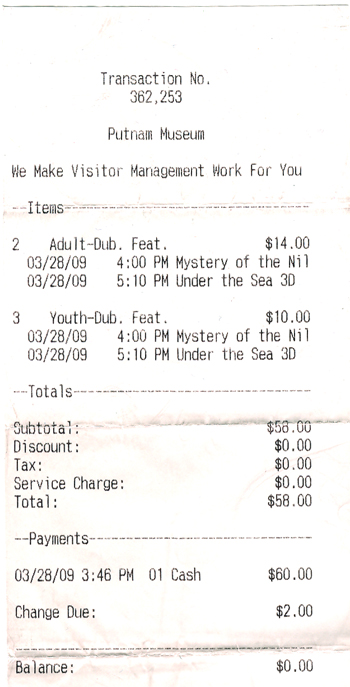I enjoyed reading Brad McMillan’s article in InterBusiness Issues this month. It was quite entertaining. I had no idea he was such a good fiction writer, or that IBI had added a fiction section. Check out some of these knee-slapping lines:
The notion that this [museum] project was elitist and was forced on the community from the top down is simply false. Instead, this grass-roots initiative included nine museum groups and hundreds of volunteers…
Grass-roots initiative? Yes, this little “grassroots initiative” was pushed along by common, everyday people like various CEOs of Caterpillar and other large corporations, U.S. Congressmen, State Senators, and local mayors — all of whom are chronicled in Mr. McMillan’s article, by the way. And that “grassroots” marketing campaign that cost almost a million dollars? It was nothing short of miraculous the way the common folks were able to come up with that kind of money. The whole project was a modern-day “Little Engine That Could” story.
Our legacy Build the Block project is funded 55 percent private and 45 percent public….
And if you believe that, I have a bridge in Brooklyn I’d like to sell you. The County alone is pumping over $59 million (including bond interest) into the project, the City’s contribution is roughly $17 million (land, TIF proceeds through 2021, improvements to Water Street), we’re getting $9 million in public funds for the parking deck ($4 million in federal highway administration funds and $5 million in state capital funds) — what are we up to now? $85 million? That’s already over 60% of the $140 million project.
…it was the broad-based collaboration between labor groups, museum collaborators, families and business that helped pass a sales tax referendum during the worst part of our economic recession.
…by promising to build an IMAX theater, use 100% local union labor, not bond out more than $40 million, and not bond out until all the private funds were raised — all promises on which they’ve now reneged.
Mike Everett, president of the West Central Illinois Building Trades, tirelessly raised money and put up signs for the Build the Block campaign, knowing that it would provide 250 local construction jobs for his men and women over 25 months.
Except that, since this is a public project now, those construction jobs will have to go to the lowest bidder, and that’s not necessarily going to end up being local laborers. I’m sure the museum supporters are hoping it will end up being local labor, since they promised in their TV ads it would be built with “100% local union labor.”
Through the efforts of so many, the 15-year hole in the heart of Peoria will now be filled with one of the single most important cultural and economic developments in our region’s history.
Fifteen years ago was 1995. Sears was still open and doing business on the block then. They didn’t close the store and move to Northwoods until 1998, so the block hasn’t been a “15-year hole in the heart of Peoria.” But I’m quibbling. Why let facts get in the way of a good story, right?

